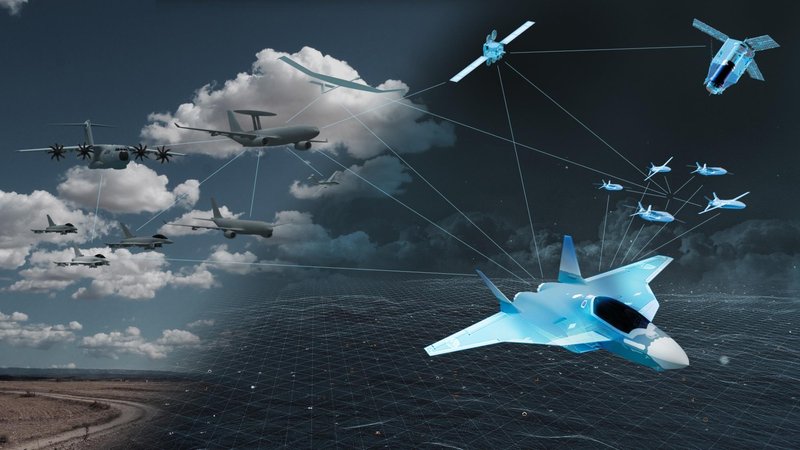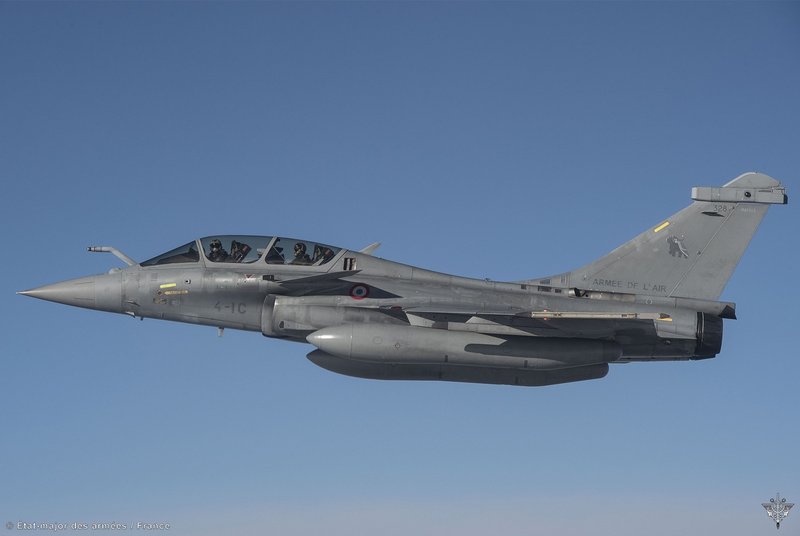Clouds on the horizon: France eyes networking opportunities for FCAS
The Franco-German-Spanish-Belgian FCAS/SCAF combat air project continues to progress, albeit with a degree of uncertainty as to the final result and whether all partners will be there at the finish.
The inevitable difficulties of an international programme, debates over IP ownership and workshare and whether or not certain elements (the French naval operational requirement, in particular) can be supported have yet to be resolved... Continues below
Newsletter Sponsors:

Above: While the physical aircraft, both crewed and uncrewed, are obviously at the heart of FCAS, the wider information network they operate in will be equally important. (Image: Airbus Defence & Space)
Usually, programmes such as FCAS are seen in terms of the crewed fighter element. However, for France, one of the key elements of the system is the backbone that allows contribution and sharing of data across not just between FCAS elements but across the wider military command and control network.

The plan here is ambitious and mirrors US and other efforts to connect as many land, air and sea units as possible so that any and all information can be shared and used where relevant. The concept can be viewed as a mixture of a bring-your-own party and a buffet: everyone contributes and can pick what they want from the data available.
Clearly, artificial intelligence and big data tools will be crucial in sorting the wheat from the chaff and avoiding an inundation of information for any given user.
While this is not, essentially, an original or advanced concept, the evolution of the European defence and security environment since Spring 2022 has brought new pressures to bear.
Much of the theoretical work on these systems evolved during the asymmetric conflicts in Iraq and Afghanistan. For France, the prolonged Operation Barkhane in Africa’s Sahel region placed a premium on a low-intensity coordination of UAS, light ground forces and a degree of naval operations to prosecute a mixed combat and security role.

For Paris and the rest of NATO, the emphasis and likely usage of such future systems has clearly now changed.
A telling point is indicated by France’s Orion 2023 exercise, which differed markedly from previous examples. Completed in May, this represented one of the largest in several decades, and crucially envisaged a high-intensity peer conflict in Europe during which forces would be stretched to their limits.

Above: France’s Exercise Orion 2023 saw ‘traditional’ assets such as Rafale work alongside cyber and space forces. (Photo: French Armed Forces)
One of the key facets was to ensure that all forces were capable of coordination with a very short decision cycle and across both traditional and new forms of warfare. Alongside aircraft, armour, infantry and frigates there was a core role played by cyber and space forces, fusing what is generally termed conflict with the domain of information warfare.
2022 saw phase 1B of the FCAS programme launched, with upcoming demonstration of the fighter and ‘loyal wingman’ efforts being seen – understandably – as a key measure of progress.

Dassault, Airbus, Safran, MTU, Thales, Indra and MBDA are all no doubt relieved that the physical side is progressing. But as with the US, UK and other major defence powers, there is evidence that for users the showcase pieces are only as important as the means to maximise their utility.
Rafale, Eurofighter and similar assets have a long service life ahead of them, but their proven ability to provide kinetic effect is being slowly matched by the importance of playing a part in less tangible operations.

Trillium Engineering specializes in the design and production of gimballed imaging systems for manned and unmanned aircraft. See Details
Videos of small drones attacking Russian tanks with ‘cope cages’ are widely available, but what Orion 2023 showed is that substantial thought is going on with regard to the subtler ways of ensuring the information spectrum is addressed as keenly as traditional and physical space.
Don't want to miss out on future Decisive Edge content? Make sure you are signed up to our email newsletters.














